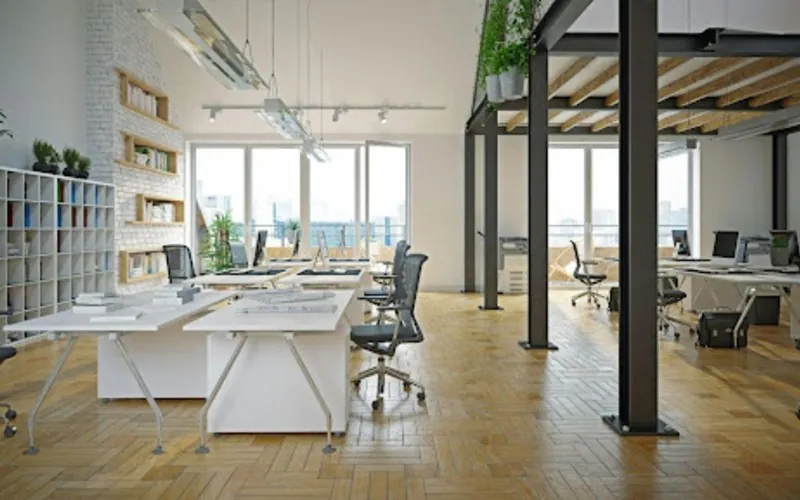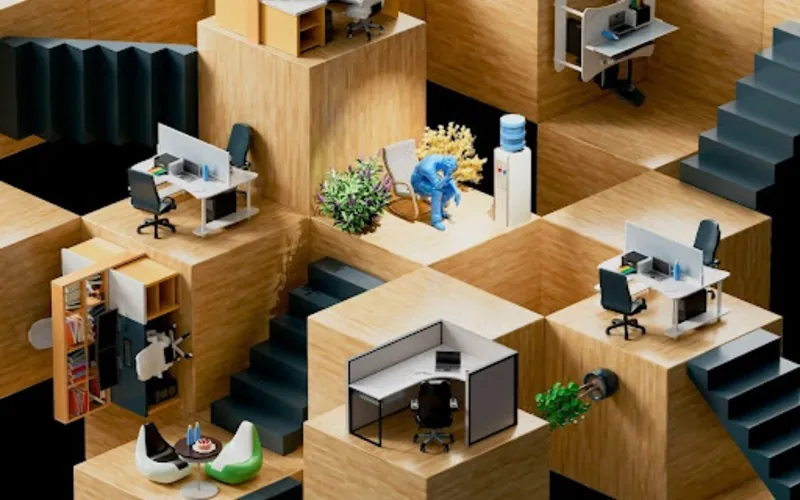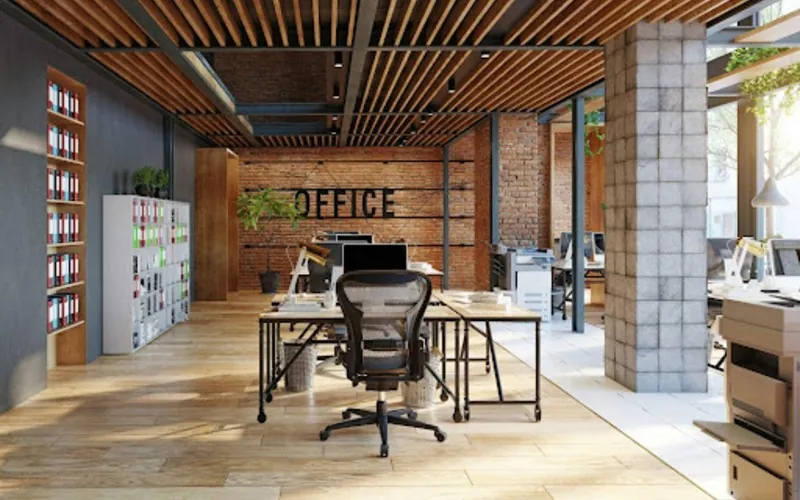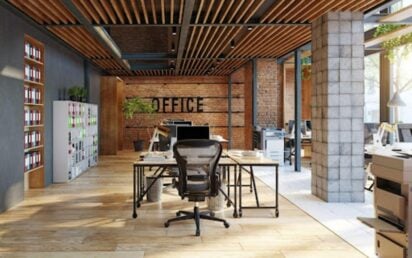Scaling a company is one of the most exciting — and complex — phases in any business journey. While most founders and leadership teams focus on customer acquisition, hiring, or funding rounds, one critical area often receives less attention: office infrastructure.
An office isn’t just a collection of desks and chairs — it’s a crucial part of a company’s culture, productivity, and future-readiness. As hybrid work continues to redefine the nature of collaboration and space utilisation, growing companies must think strategically about how to build office environments that can adapt to their changing needs.
Simple, forward-thinking decisions — even around workspace ergonomics — can have long-term impacts on both employee wellbeing and operational scalability. For example, many startups and SMEs are turning to flexible office solutions, such as ergonomic seating and modular furniture offered by ChairOffice, to create workspaces that remain functional as teams grow and evolve.
In this article, we’ll explore how scaling companies can approach office infrastructure intelligently to support sustainable growth, agility, and workforce satisfaction.
The New Reality of Office Space for Growth Companies
The office landscape for SMEs and startups has changed dramatically in the last five years. Traditional long-term leases, fixed desk allocations, and rigid layouts no longer align with how most companies operate. Hybrid work models, distributed teams, and fluid headcounts have made flexibility the top priority.
Startups and scale-ups today need office environments that:
- Support both in-office and remote work seamlessly.
- Can be easily reconfigured as teams grow or pivot.
- Encourage collaboration without sacrificing focus.
- Support employee wellbeing with ergonomic, health-focused design.
- Avoid wasteful spending on underutilised space.
Future-proofing office infrastructure is no longer a luxury; it’s a necessity for growth.
Why Early Infrastructure Decisions Matter
Many early-stage companies approach office decisions reactively — renting spaces that suit their current headcount and outfitting them with basic, often inexpensive furniture. While understandable from a cost perspective, this short-term mindset can create challenges later as the business scales.
Poor early infrastructure decisions can lead to:
- Costly redesigns when teams outgrow spaces.
- Productivity losses due to uncomfortable or inflexible setups.
- Difficulty attracting talent who expect modern, hybrid-friendly environments.
- Inability to adapt quickly to shifts in business strategy or market conditions.
Proactively investing in scalable office solutions from the start allows companies to avoid these pitfalls, creating a solid operational foundation that supports growth rather than hinders it.
Modular Layouts: Flexibility Is King
One of the most effective ways to future-proof office infrastructure is through modular design.
Modular office layouts use movable walls, flexible furniture, and multi-use spaces that can easily be reconfigured. This enables growing companies to:
- Adjust team sizes without relocating.
- Repurpose rooms for meetings, collaboration, or quiet work.
- Quickly adapt floor plans as hybrid work patterns evolve.
- Avoid the downtime and disruption of full-scale office renovations.
Modular systems provide physical agility that mirrors the organisational agility many startups strive for.
Ergonomics: A Non-Negotiable Investment

While desks and chairs may seem like minor considerations compared to cloud architecture or product roadmaps, ergonomic office furniture directly impacts both employee wellbeing and productivity.
Prolonged sitting, poor posture, and repetitive strain injuries are common workplace health issues that can lead to absenteeism, lost productivity, and long-term healthcare costs. Forward-thinking companies prioritise ergonomic design from day one.
Features of scalable ergonomic office setups include:
- Adjustable desks (sitting and standing options).
- Ergonomic chairs with lumbar support, like models offered by ChairOffice.
- Monitor arms for flexible screen positioning.
- Keyboard trays and mouse platforms to reduce wrist strain.
- Proper lighting to reduce eye fatigue.
By prioritising employee health early, companies signal a commitment to wellbeing that helps attract and retain top talent.
Technology Integration for Hybrid Readiness
Office infrastructure in 2025 is as much about digital readiness as it is about physical layout. Hybrid work environments require seamless technology integration that allows teams to collaborate effectively across locations.
Key hybrid-ready tech investments include:
- Video conferencing infrastructure in every meeting room.
- Cloud-based collaboration platforms (e.g. Slack, Microsoft Teams, Asana).
- Secure VPNs and remote access protocols.
- Hot-desking and space booking software.
- Occupancy sensors and real-time space analytics.
As highlighted by Harvard Business Review, companies that thoughtfully design both physical and digital workspaces see stronger collaboration, higher engagement, and better long-term retention as hybrid work becomes the norm.
Sustainable Design: Preparing for Long-Term Value
Sustainability is no longer a peripheral concern; it’s a growing expectation from employees, investors, and customers alike. Office design plays a key role in a company’s ESG (Environmental, Social, Governance) narrative.
Sustainable office infrastructure may include:
- Furniture made from recycled or renewable materials.
- Energy-efficient lighting and HVAC systems.
- Low-VOC (volatile organic compounds) paints and finishes.
- Smart building systems to monitor energy usage.
- Flexible leases or co-working partnerships to avoid wasted space.
Investing in sustainability now positions companies favourably for future regulatory compliance and brand reputation.
Lease Flexibility: Avoiding Long-Term Lock-In
Another common trap for scaling businesses is committing to long-term office leases that don’t match future needs.
Modern office providers increasingly offer:
- Shorter lease terms with options to scale space up or down.
- Co-working memberships that scale with team size.
- “Flex space” models that include shared amenities.
- Managed office solutions that handle IT, maintenance, and security.
Flexible leasing allows growing companies to remain nimble as revenue streams, funding rounds, or headcounts fluctuate — all common realities of scaling.
Employee Experience as a Strategic Priority
Today’s employees — especially younger, highly skilled workers — expect more from their office environments. Flexible hours and remote options are table stakes. The physical office must provide added value to make commuting worthwhile.
Smart office infrastructure should support:
- Collaboration zones that foster creativity and team cohesion.
- Quiet areas for deep, focused work.
- Onsite wellness amenities such as fitness rooms or meditation spaces.
- Social areas for informal networking and company culture building.
- Ergonomically designed workstations to prevent injury and discomfort.
Prioritising employee experience through thoughtful office design helps startups compete for scarce talent in competitive markets.
Future-Proofing Through Scalability

Perhaps the most important principle in office infrastructure planning for scaling businesses is designing for scalability.
This means choosing:
- Modular office layouts that grow with your team.
- Furniture that adjusts to different users and tasks.
- Technology platforms that scale seamlessly with headcount.
- Vendors and suppliers who offer adaptable solutions.
Early investments that might seem slightly more expensive up front often pay significant dividends in avoided rework, productivity gains, and talent retention as the business grows.
Office Infrastructure as a Competitive Advantage
For many startups and SMEs, physical office space can feel secondary to core business objectives like product development, funding, or customer acquisition. But as companies scale, office infrastructure becomes a surprisingly impactful competitive lever.
A well-designed, flexible, and employee-centric office:
- Reduces operating costs.
- Minimises disruptions during growth.
- Attracts and retains top talent.
- Supports hybrid work models.
- Aligns with sustainability commitments.
- Reinforces company culture and values.
In highly competitive markets, these advantages can compound over time, directly influencing long-term business performance.
Scaling a company is not just about hiring or growing revenue — it’s about building infrastructure that supports sustainable, adaptable growth. Office space is a critical, and often underestimated, component of that foundation.
By taking a proactive approach — investing in flexible layouts, ergonomic furniture from providers like ChairOffice, hybrid-ready technology, and employee-centric design — growing businesses can future-proof their office infrastructure to meet the evolving demands of both the business and its people.
In a world where work is increasingly fluid, the companies that succeed will be those that design their work environments to be equally adaptable.


